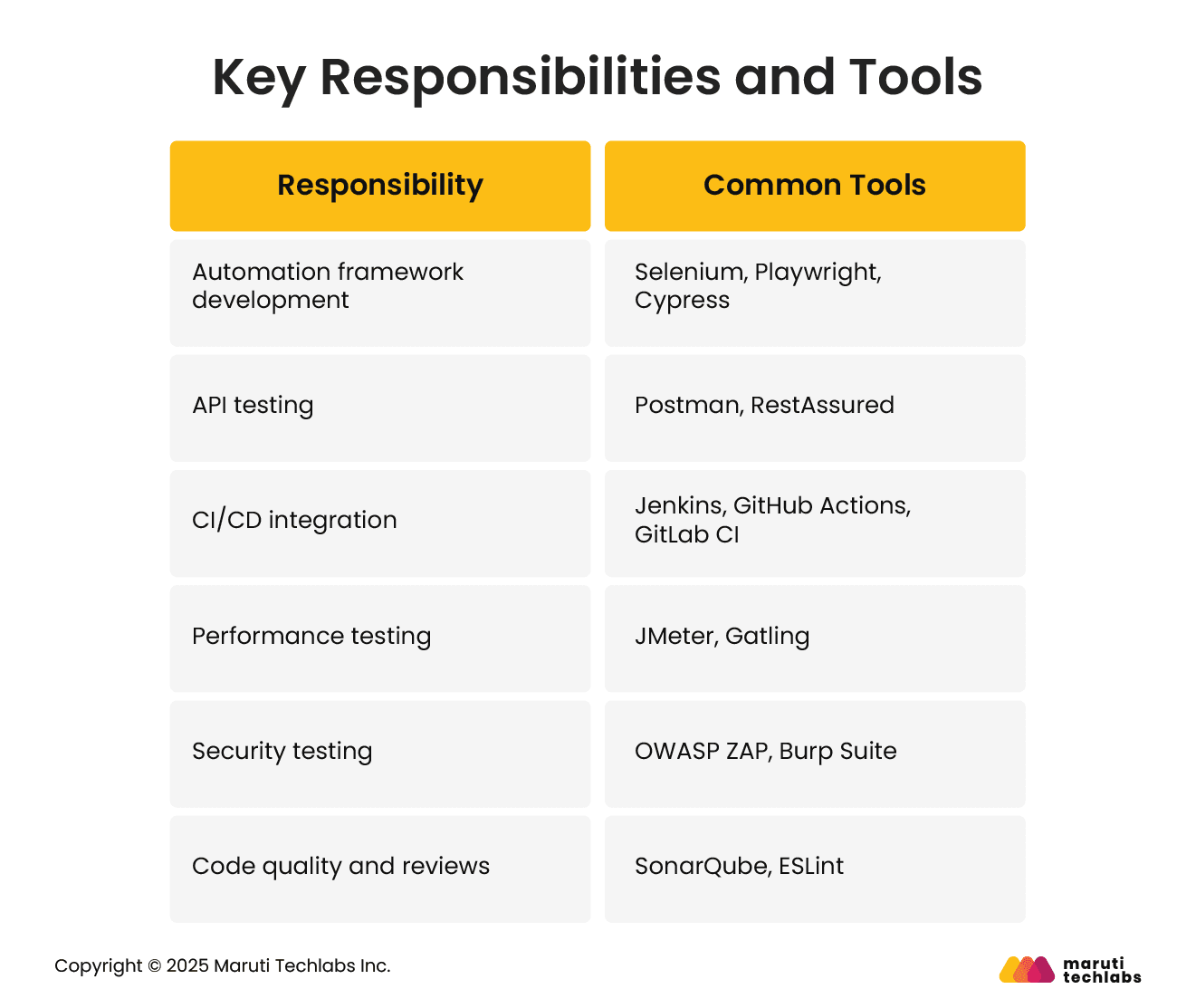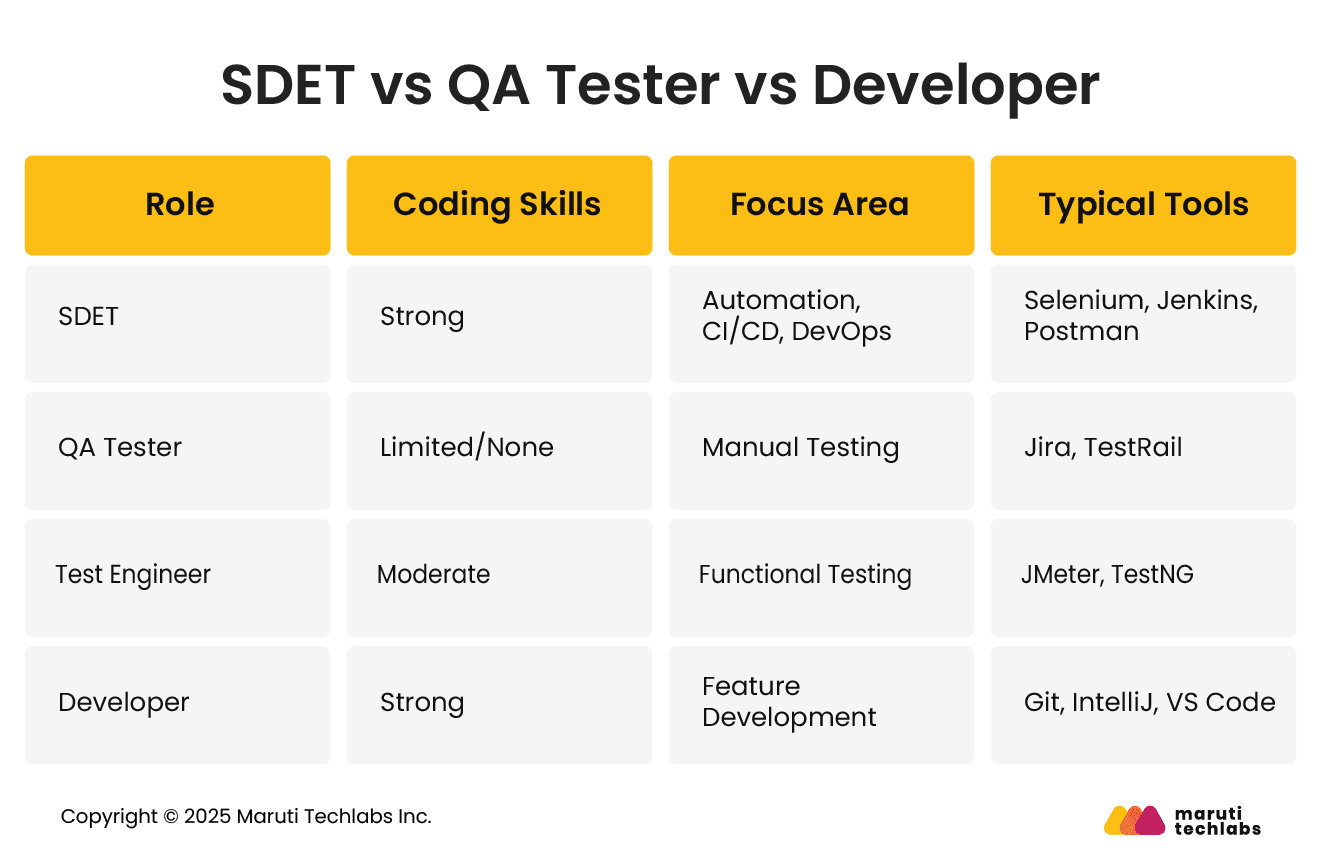

SDET 2025: Everything You Need to Know About the Role, Skills & Pay






In the fast-paced world of software development, quality assurance is no longer an afterthought—it’s a core part of the development process. This is where the Software Development Engineer in Test (SDET) comes in. As the tech landscape continues to evolve with the rise of DevOps, Agile, and AI-powered systems, the demand for SDETs is expected to skyrocket in 2025.
But what exactly does an SDET do, and why is this role becoming indispensable in modern engineering teams? Let’s break it down.
An SDET (Software Development Engineer in Test) is a hybrid role that combines the skills of a software developer and a quality assurance engineer. Unlike traditional testers, SDETs write code to automate testing tasks, build test frameworks, and work closely with developers to ensure software quality throughout the development lifecycle.
SDETs are critical in today’s shift-left testing strategy, where testing is introduced early in the software development process to catch bugs faster and release more stable code.
The job role or position called SDET first originated at tech giants like Microsoft and Amazon, who needed engineers capable of writing test automation code at the same level as their developers. Over time, the role has evolved from a niche position into a mainstream engineering discipline.
Unlike manual QA testers, SDETs are embedded within development teams. They contribute to code reviews, participate in sprint planning, and are responsible for the automation frameworks that power modern software testing.
The responsibilities of an SDET have expanded significantly in 2025. As testing becomes more integrated with the software delivery pipeline, SDETs now handle a wide range of tasks:
These responsibilities reflect the shift towards continuous testing in Agile and DevOps workflows.
SDETs are expected to manage the entire testing infrastructure. Below are the core responsibilities and the tools typically used:

To better understand the SDET role, here’s a comparison with other common software roles:

Several trends are driving the growing demand for SDETs:
The SDET career path offers plenty of room for growth. Here’s a typical trajectory:
Transitioning from a manual tester to an SDET often involves upskilling in programming, automation tools, and DevOps practices.
SDETs are among the top-paid roles in software engineering due to their hybrid skill set. Here’s a snapshot of average annual salaries in 2025:

Factors that influence salary include experience, industry (fintech, health tech, etc.), and proficiency in in-demand tools like Kubernetes, Docker, and AI-based testing platforms.
Here are a few real job descriptions pulled from companies hiring SDETs:
The SDET role is no longer optional—it's essential. As software development accelerates and automation becomes a necessity, SDETs serve as the quality champions inside high-performing engineering teams. In 2025, becoming an SDET is not just a smart move—it's a strategic career choice.
Whether you're scaling your QA team or building a robust automation strategy, having the right testing expertise is key to delivering high-quality software at speed. That’s why many forward-thinking companies partner with specialized software testing service providers to augment their teams with skilled SDETs, automation engineers, and QA experts.
Looking to strengthen your testing process? Explore our end-to-end software testing solutions and see how we help businesses deliver better, faster, and more reliably.
Software Development Engineer in Test.
An SDET writes code to automate software testing, builds test frameworks, and integrates testing into CI/CD pipelines.
SDETs code and automate tests, while QA testers often perform manual testing.
Both. SDETs are developers who specialize in building testing tools and automation systems
Absolutely. With rising demand, high salaries, and future-proof skills, it's one of the top tech roles of the decade.


